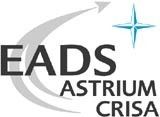
-
StatusCompleted
-
Status date2013-09-06
-
Activity Code5B.005
The project is aimed to develop a Ka-Band transmit antenna concept able to handle a high number of beams with flexibility-oriented capabilities such us power allocation, null fixing or beam hopping.
It involved a first step of market prospect in order to consolidate the requirements and tailored them to the market needs. After a study of several possible antenna architectures, a lens-based antenna was selected and all its subsystems were preliminary designed.
The most critical elements were fully designed and bread-boarded, and a demonstrator of the concept was designed and built. The results of the RF tests conducted showed good results and correlation between simulations and measurements.
The main objective of the activity was to develop a Transmit Ka-band antenna concept able to handle a high number of steerable spot beams with broadband capability to cope with near-future market needs for systems using DVB-S2 or beam hopping. This objective was broken down into the following points:
- To consolidate the requirements of a transmission multibeam DRA antenna that can cope with near future missions.
- To propose different antenna configurations that can cope with the previous requirements. It includes the survey of technological solutions for the various subassemblies.
- To do a preliminarily design of the subsystems of the selected DRA architecture and to fully design those identified as critical.
- To define a demonstrator of the selected architecture.
- To design, manufacture and test the antenna demonstrator.
- To update, based on the testing results, of the DRA performances.
- To update, based on the antenna capabilities, the market study and define a road map.
This activity has allowed the development of a transmit array antenna architecture able to handle a high number of steerable spot beams with broadband capability and flexible power allocation, among other flexibility-oriented capabilities.
Additionally, with the aim to develop a commercially-oriented product, special attention was payed to the minimization of two critical points of a DRA: mass and consumption. Thermal management was also carefully addressed together with efficiency, dissipation and power distribution (bias of the amplifying elements).
The selected configuration optimises the performances in the main quality factor (ERIP) while minimizing the number of controls needed to handle the required number of beams.
A Ka band transmit array antenna was designed, based on commercially available technologies, following a generic and modular approach in order to minimise the recurring cost and reduce the time to market.
The proposed antenna allows a high number of beams and was designed to have large growth potential. This antenna provides flexibility in terms of power allocation, shaping coverages and null filling. It would be also capable of allowing customer changes during lifetime, such as a different orbital position or new coverage regions.
During this project three key points were accomplished:
- Performing market studies for the consolidation of antenna requirements intended for actual missions and final update for establishing possible missions for the resulting antenna. Trade-offs and surveys were conducted. Selection of the most adequate antenna architecture: a lens-based DRA antenna.

click for larger image - Development of the lens based DRA antenna of 1-m diameter, with horns as radiating elements and SSPAs in the amplification stage, preliminary design of all subsystems and bread-boarding of the critical ones.

click for larger image - Definition of demonstrator, proof of concept, using a reduced hardware model. Detailed design, prototype manufacturing and testing of the necessary subassemblies. DM integration and testing with good correlation between prediction and measurements. Update of antenna performances, with confirmation of the antenna excellent features: null fixing, beam shaping, multiple beam capabilities, flexible power allocation, frequency reuse, excellent XPD and CI3 performances, attractive mass and DC consumption budgets.

click for larger image
The designed 1-m diameter antenna provides the following performances:
- EIRP values for a full-Earth coverage between 48.9dBW and 46.1dBW for 15H+15V carriers (64dB aggregated power) using COTS SSPAs of 0.25W,
- 50 W/beam-carrier DC main bus consumption,
- CI3 better than 28 dB, so the EIRP declared is in operative conditions. No IBO/OBO required,
- C/I better than 20 that allows frequency reuse,
- Mass budget of 82 Kg, i.e., 6Kg per beam,
- The concept is easily scalable, and greater EIRP can be achieved using different diameters (larger than 1 m) or amplifiers (0.5-W or 1-W SSPAs),
- Highly modular design with graceful degradation (no redundancy required) and industrialization with strong growth potential in number of beams.
n/a
Completed.
Now that the concept has been evaluated and its performance verified thought a DM testing, the next step should cover the selection of flight components and qualification of units, followed by a PFM production for a flight opportunity.
Several mission scenarios in which a DRA antenna could solve the market necessities have been identified and are under investigation to find a flight opportunity.





